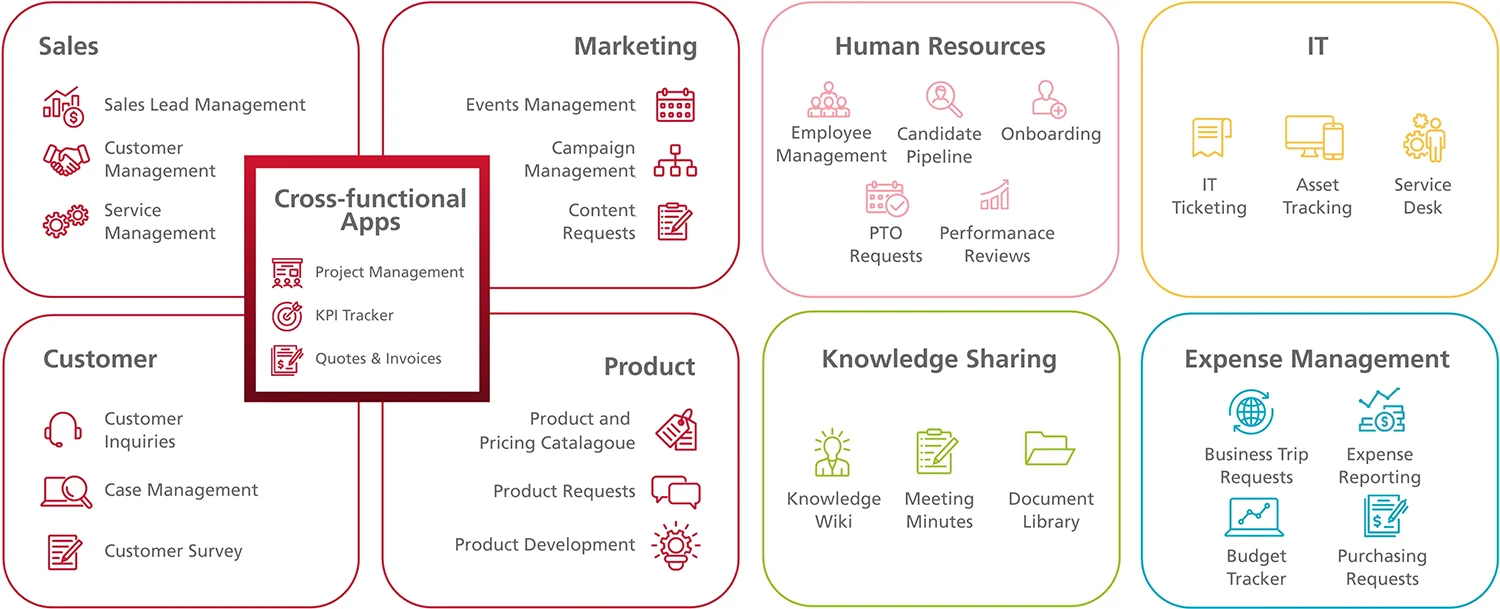If you're the go-to person in a small business—the office admin, operations coordinator, or manager of a lean team—you already wear too many hats. And the admin that comes with it can be draining when you want to get on to the work that really matters.
The good news? You don’t need a developer or IT support to start automating the tasks that are blocking you from doing more valuable work. Thanks to today’s low-code and no-code platforms, small teams can save hours every week without the tech headaches.
What Is a Low Code or No Code Platform, Exactly?
Low-code and no-code platforms are digital tools that let anyone create automated workflows, apps, and integrations without needing traditional programming skills. No-code tools rely entirely on visual interfaces (drag, drop, and click), while low-code platforms offer slightly more customisation options for users who want added control.
For busy office managers and admins, these tools offer the power of automation without the complexity or cost of traditional IT systems.
With these types of solutions, like Ricoh’s Kintone+, you can build workflows, create custom forms, manage databases, and automate approvals—all from one intuitive platform.

Why Small Teams Need Automation
If you’ve ever spotted a repetitive task and thought, “We should automate this”, you’re not alone. Many office managers and department heads can see where improvements could be made—but getting those changes implemented often depends on already stretched IT teams.
The reality is, IT departments are balancing critical infrastructure, security, and strategic initiatives. Supporting day-to-day process changes across every team isn't always feasible.
That’s where low-code and no-code platforms come in. These tools give non-technical teams the ability to build their own solutions for everyday problems—without adding to IT’s workload. It’s not about working around IT, it’s about working with them more efficiently.
From managing approvals and tracking internal requests to streamlining reporting or data entry, these tools allow your team to take action, improve processes, and get results faster.
For office managers and team leads, this means fewer bottlenecks, more control over daily operations, and the ability to unlock real improvements, without needing a full tech team behind you.

Everyday Time Traps in Small Businesses (and How to Break Free)
Everyday Time Traps in Small Businesses (and How to Break Free)Busy teams are often buried in routine tasks without even realising how much time they take. From data entry to chasing approvals, these everyday processes can quietly drain hours and slow momentum.
Here are some of the common culprits—and how smart automation can help your team reclaim time and focus on what really matters:
When evaluating a no-code platform for your team, keep an eye out for:
These are quick wins you can implement today.
Common Fears About Automation
Some small businesses are still hesitant to adopt automation tools. Here’s why those concerns no longer apply:
"I'm not tech-savvy."
Today’s platforms are built for everyday users. If you can use a spreadsheet, you can automate a task.
"We can’t afford new software."
Many low code platforms are budget-friendly and scale with your needs.
"It won’t work with our current systems."
Modern automation tools are built for integration, making it easy to connect the apps you already use.
Automation for Small Teams: Where to Start and What to Use
Nearly every team has a need for some kind of automation. Here’s a simple cheat sheet to match key departments with powerful, no-code automation ideas:
| Department | Recommended Automations |
| Finance | Expense approvals, budget tracking, payment reminders |
| Sales | Lead capture, email follow-ups, CRM updates |
| HR | Onboarding workflows, leave approvals, payroll coordination |
| Marketing | Social media scheduling, campaign reporting, contact management |
| Operations/Admin | Document filing, task assignments, internal request tracking |

Example: A local business uses Kintone+ to automate expense approval workflows, ensuring all purchase requests are tracked, approved, and documented in real-time. This not only streamlines the finance process but also improves visibility into departmental spending, helping the business maintain better cash flow and identify cost-saving opportunities faster.
How to Automate a Task in 5 Easy Steps
You don’t need to write a single line of code. If you can drag, drop, and follow instructions, you can automate a task in under an hour.
You don’t need to write a single line of code. If you can drag, drop, and follow instructions, you can automate a task in under an hour.
Bonus Tips to Keep Your Automation Effective
- Start small: pick one task and automate it well before expanding.
- Review regularly: revisit workflows every few months to optimize or adjust.
- Involve your team: gather feedback and make sure the automations are helping, not hindering.
The Low-code, No-code Payoff: More Time and Happier Teams
Adopting low code and no-code automation has the potential to transform the way small teams work. These tools empower your team to focus on high-value, human-centered tasks instead of repetitive admin work.
And perhaps most importantly, your team feels empowered. When non-technical staff can implement changes and improvements themselves, without waiting on IT or outside help, they become more invested in the business's success.
Final tip? Don’t try to automate everything all at once. Start with the task that drives you most up the wall, automate it, and enjoy the payoff. Once you see how easy and effective it is, you’ll wonder how your team ever worked without it.
Keep it simple. Start small. And build momentum
Ready to Automate?
Discover how easy automation can be with Kintone+. Whether you're just getting started or ready to streamline multiple workflows, Kintone+ makes it simple for any team member to build smart, time-saving solutions—no coding required.
Take the first step.
Explore RICOH Kintone plusAileen Kuang - Regional Portfolio Product Marketing Manager - Ricoh APAC
Aileen Kuang has been at the forefront of driving digital transformation for small and medium-sized businesses across the APAC region. Known for a hands-on approach and an ability to translate complex technical offerings into clear business value, she helps organisations embrace new technologies to accelerate growth and efficiency.
She continues to champion Ricoh’s commitment to empowering businesses with scalable, cloud-based solutions-enabling customers to thrive in an increasingly digital world.
FAQs
Popular automation tools for small businesses include Zapier, Microsoft Power Automate, and Trello’s Butler. These let teams connect apps, set triggers, and automate daily admin with little technical skill.
Recommended resources for you

Disruption in APAC: The Operational Efficiency Risk
Explore how disruption is straining operational efficiency across APAC, and how forward-focused organisations are finding smart, scalable ways to build business growth.

The Small Team’s Guide to Automation: Simple Tools to Save Hours Every Week
Discover how small businesses are using no-code task automation to streamline daily work—no coding skills required. Learn practical tips and how to get started today.

No-Code, No Stress: How SMBs Boost Productivity with Simple Automation
Discover how small businesses are using no-code task automation to streamline daily work—no coding skills required. Learn practical tips and how to get started today.




